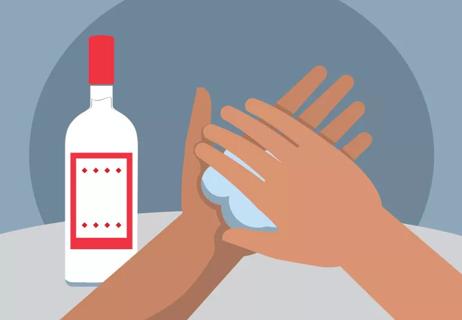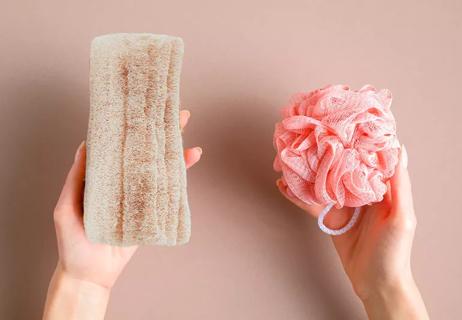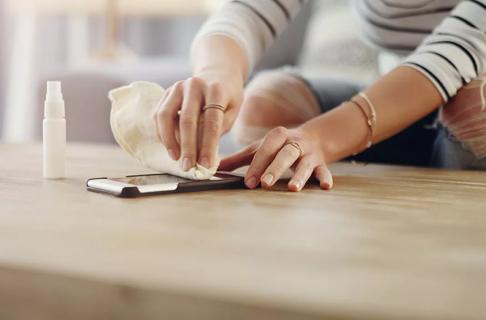Cross contamination is common in the kitchen

Did you know that about 9% of foodborne illness outbreaks occur in the home and it’s almost impossible to tell where the bacteria may live with the naked eye?
Advertisement
Cleveland Clinic is a non-profit academic medical center. Advertising on our site helps support our mission. We do not endorse non-Cleveland Clinic products or services. Policy
Research has identified the top kitchen items that are commonly cross-contaminated during the preparation of a meal (yuck!). Infectious disease specialist Susan Rehm, MD, outlines these top kitchen contaminators and how to make sure you don’t get sick.
Like sponges, cloth towels were the most frequently contaminated article in the kitchen. How many times have you used a towel to wipe off the counter after cooking, washed your hands and then wiped your clean hands with that same towel? It happens more often than you think.
“One of the best ways to prevent cross contamination in the kitchen is to use paper towels,” says Dr. Rehm.
Research also shows that salmonella grows on cloths stored overnight, even after they were washed and rinsed in the sink. To minimize risk of contamination, either strictly use paper towels or use a new, clean cloth for each surface in your kitchen. Be sure to wash your towels with bleach or other disinfectants before using them again.
Just like if you take your phone to the bathroom with you, anything you touch in the kitchen following contact with raw meat can become contaminated. That includes your smartphone or tablet you use to follow a recipe or answer a call.
Advertisement
“Either don’t use it or clean it as frequently as you would wash your hands,” she says.
Consider covering your device with clear plastic or printing out the recipe so you don’t have to touch your device. If you don’t want to print it out, make sure to disinfect your phone afterwards.
To disinfect your phone, Dr. Rehm recommends following these steps:
Never use harsh chemicals on your devices. Double-check with your phone brand on the proper way to disinfect their products so you don’t end up ruining your expensive tech.
When was the last time you disinfected your sink faucet, refrigerator, oven or trash can?
“During food prep, be aware that there are bacteria in food and touching it can spread it to other surfaces and potentially cause illness,” says Dr. Rehm. “Common bacteria found in the kitchen include E.coli, salmonella, shigella, campylobacter, norovirus and hepatitis A.”
E.coli can survive for hours on a surface, salmonella can survive for about four hours and hepatitis A can survive for months. If those numbers make you nervous, lessen your chances of getting those germs by disinfecting each surface that bacteria could have come into contact with. And yes, that means wiping down or spraying each surface in your kitchen that you worked at just to be sure.
With so many different kitchen utensils, it’s important to be aware of how you use them, too.
“When you use tongs or a fork to put raw poultry on the grill, you should wash it immediately afterwards if you plan to use the same tools to serve the meal,” says Dr. Rehm.
Sanitize your utensils by hand-washing in hot, soapy water and sanitizing solution. Make sure to air-dry them completely before putting them away into the cupboard.
Believe it or not, it’s common for people to not wash their hands with the frequency or quality needed to reduce bacterial contamination.
“When preparing food, it’s wise to wash hands beforehand, frequently throughout, and afterwards,” says Dr. Rehm.
Each time you handle raw meat, wash your hands. Lather your hands with soap (don’t forget your nails, between your fingers and the back of your hands!) Scrub your hands for at least 20 seconds and then use a paper towel to dry them and don’t reuse it. Throw the used paper towel away immediately after use.
Bacteria can be found on your favorite fruit and veggies.
If you’re not careful, that bacteria could cause nausea, vomiting and diarrhea. Cleaning up is less effective than not contaminating it in the first place, so make it a habit to keep surfaces as clean as possible the first time to avoid cross contamination.
Advertisement
Learn more about our editorial process.
Advertisement

Leaving footwear on invites germs, bacteria, toxins and other unwanted guests into your home

Some dryers spread germs instead of removing them

Wash your hands, skip the buffet and don’t wash your poultry

The short answer from an infectious disease specialist

While the sponge can become lodged with skin cells (and other gross things), make sure you dry it daily and clean once a week

Reduce the risk of exposing yourself and those you love to germs

Unfortunately, putting your jeans in the freezer doesn’t kill germs, and it definitely doesn’t get them clean

Don’t wipe away your clean with a dirty towel

Type 2 diabetes isn’t inevitable with these dietary changes

Applying a hot or cold compress can help with pain